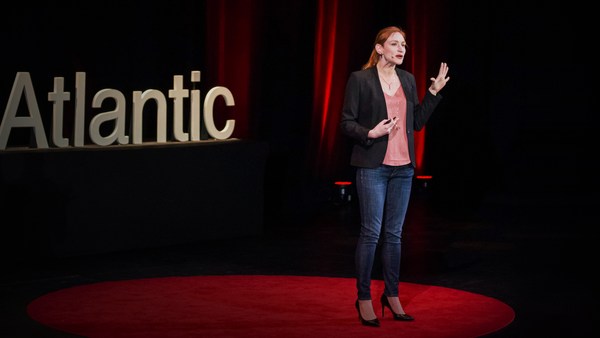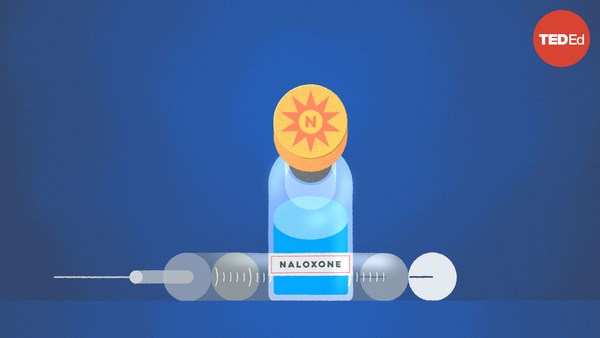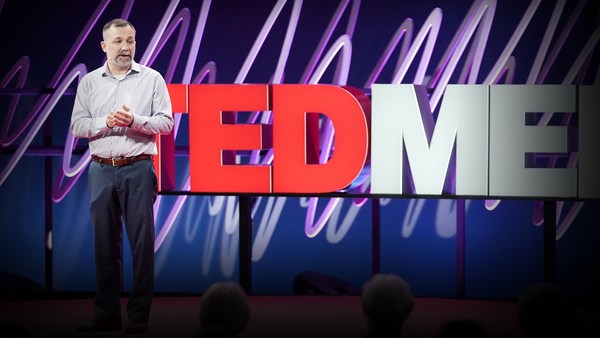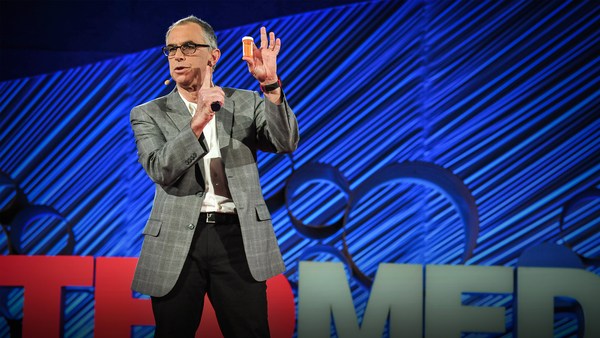Over the past 20 years more than 800,000 people have died in the United States due do drug overdose. Yes, more than all the lives lost in all the wars this country has fought in. The majority of these cases are due to opioid drugs. Sadly, while we're having this very conversation, at least one person will die from a drug overdose, and a child will be born experiencing severe withdrawals due to in utero opioid exposure.
Only recently have some pharmaceutical companies been held legally responsible for the opioid crisis. And compared to their multibillion-dollar revenues, the economic penalties they're paying seem minuscule. So let me as a question: why does addiction and the stigma of addiction make it OK to undervalue human lives?
Ironically, I'm often asked the opposite question. Why should we care about "addicts?" Sometimes I'm even shouted at by people who think that anyone who suffers from a substance use disorder brought it on themselves. They must be weak, they lack any moral compass and therefore don't deserve any help. But if you know anything about opioid addiction, you know that this population does not fit that stereotype -- not that any addiction every really does. These are mothers, fathers and grandmothers. They're teachers, business leaders, cheerleaders, athletes, nurses and bus drivers. They're your brother or sister. They represent every fiber in the fabric of our society. Yes, each person came to addiction in a different way, but a major cause of the current epidemic is that medical overprescription of opioid drugs for the treatment of chronic pain. And that is one thing that makes this epidemic different. This particular epidemic was caused by doctors' prescriptions.
The cycle started when pharmaceutical companies convinced physicians that their patients should not feel any pain. Opioid makers claimed that their very potent drugs would not lead to addiction unless individuals were certain kinds of people from certain kinds of communities. Such disinformation, compounded with clinicians' limited education and public ignorance about addiction, is what created the epidemic. So that's how we got here.
Now the question is: how do you treat a national opioid epidemic? During an epidemic, normally governments, clinicians and scientists are brought together to help the afflicted. They develop new and even unconventional treatment strategies to rapidly address the condition. That has not been the case for the opioid epidemic. However, the picture is changing. We're beginning to see more aggressive government actions. For example, the NIH recently started a new initiative called HEAL. HEAL stands for Helping End Addiction Long-term, and it's designed to accelerate research for pain management and addiction through funding new treatment strategies.
The current treatment strategy for opioid addiction is the use of other opioids such as methadone. These few medications have been used during the past 50 years. They're considered substitution therapy -- basically fighting fire with fire. They have saved numerous lives, yet they're not used by many who still need them. Why? These medications are themselves addictive, and therefore come with many governmental regulations. Hundreds of thousands of people must be strictly monitored each day. They must find an opioid clinic -- often far from home -- take their meds and then try to make it into work. Obviously, that is not the most effective treatment strategy for an epidemic.
And it raises obvious questions as well. For example: why is the treatment of addiction disorders different from other medical disorders? With most other medical disorders, a nonaddictive, prescribed medication is picked up at the pharmacy. Why do physicians treating their patients with a substance use disorder have limited treatment options? No one ever says that two to three treatments are enough for cancer, especially when it's not a cure.
And that brings us to that 200 billion-dollar problem. Fighting fire with fire is a reasonable strategy, but what about using a different form of fire -- a safer form of fire? What about actually developing a nonaddictive treatment derived from another drug? That has been my journey towards trying to develop a treatment for opioid addiction, and it's taken me in some really surprising directions.
My journey started with studying cannabis, the drug most people call marijuana. In order to understand how cannabis may connect to combating the opioid epidemic, first it helps to understand a little bit about the science behind the drug and the politics.
Cannabis is a complex plant. It's actually made up of over 140 cannabinoids. Cannabinoids are active chemicals from the plant that binds to cannabinoid receptors in our bodies. The potent psychoactive cannabinoid that leads to the reward -- the high -- is THC, which we scientists call tetrahydrocannabinol. Pretty simple, right?
But the politics is a lot more complicated. Attitudes towards cannabis and the amount of THC that's considered safe to consume have dramatically changed over the years. In fact, this country's had a roller-coaster relationship with the drug. Cannabis is either highly demonized or glorified. On the demonized side, cannabis was deemed a Schedule I drug by the DEA -- the Drug Enforcement Agency -- meaning that cannabis is considered to be a drug of the highest abuse potential and to have no medicinal value. Moreover, the Schedule I label led to the mass, biased arrest for the use of cannabis, particularly among young Black and brown men. However, things are changing. The pendulum is shifting in the opposite direction. Today, cannabis is legal for medical or recreational use in most states. And a bill is even being considered in Congress to remove cannabis from the list of schedule drugs.
We've also seen a great increase in cannabis research. Most research studies, including some of my own, focus on THC. In fact, our animal research has shown a negative relationship between THC and opioid addiction. However, as I mentioned, the cannabis plant has over 100 cannabinoids. So THC was not the only one to study. In examining another cannabinoid, cannabidiol -- that is, CBD -- we were actually surprised to see features relevant to alleviating opioid addiction-related behaviors. So there my journey turned to CBD.
So what's this CBD that has moved from virtual obscurity only a few years ago to everywhere in society -- in your coffee in the morning, your water at lunch and your beer at dinner? CBD comes from the cannabis plant, but in contrast to THC that has the high, CBD has no addictive properties. We're still trying to figure out how CBD fully works, but it is known that CBD alters chemicals in the brain that regulate emotions and anxiety.
Interestingly, giving CBD to our animal models that had a history of self-administering heroin, reduced their heroin-seeking behavior. Specifically, CBD reduced heroin-seeking triggered by environmental cues that were previously associated with the drug. Let me say that again. CBD reduced heroin-seeking triggered by drug cues. This is significant, because craving is often triggered by the memories of the cues previously associated with drug use. And craving is a matter of life or death daily for people with an opioid use disorder. Simply put, craving can lead to relapse and death from overdose. So reducing craving is an important treatment strategy.
Getting results from animal models like this is actually the first critical step in the FDA process for developing new medications. The next step: human studies. In our first human study, we demonstrated that CBD is safe, even though individuals taking it had also consumed a potent opioid. Next, to determine efficacy, we conducted clinical trials and made sure that both the study investigators and the study participants were blind to the CBD or the placebo substances. The results from those studies replicated the findings that we had in the animal experiments.
So now we know that CBD can reduce craving triggered by environmental cues in human heroin users. What's more, our results demonstrated that CBD reduced anxiety associated with the drug use. This is also significant because anxiety is another critical factor that triggers craving. Importantly, CBD also reduced the levels of the stress hormone cortisol that is often elevated when addicted individuals are exposed to drug use. Another intriguing finding was the CBD continued to decrease craving and anxiety even a week following its final use. This aspect of prolonged efficacy is very beneficial for people taking any medication.
So the evidence is mounting. CBD does show potential to reduce critical features for opioid addiction such as craving and anxiety. But we're still not at the end of the road for medication development. The gold standard for medicine established by the FDA is large, clinical trials. Recently, I was fortunate enough to be given that rare opportunity to conduct a large, clinical trial with CBD in people with an opioid use disorder. And that study is expected to continue for at least another two years. CBD is now being investigated for numerous medical conditions. Also, during the past decade, our society has seen an explosion of CBD. It's being put into drink, food, wellness and skincare products. They're even giving CBD to pets.
So is CBD a wonder drug as now touted by many? No. Does it have potential medicinal benefits? It does. But the only way to get definitive information about CBD's full safety and efficacy is through large, clinical trials.
So is it possible that we could actually change the game by taking this very familiar plant and developing a nonaddictive, FDA-approved medication for opioid use disorder? Absolutely. That is why we're working so hard right now to develop a solution based on CBD.
For me, the potential benefits are obvious and also overwhelming. It means helping to give families back their mother or father. It means having your child graduate from high school or college. But most of all, it means helping to save many of the hundreds of thousands of lives that will otherwise be lost to opioids in the next decade.
Thank you.
(Applause)





